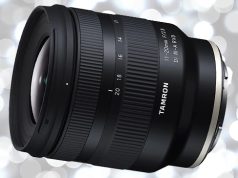
Denver, CO—Ricoh Imaging Americas Corporation announced the Pentax K-3 II digital SLR as the “ultimate field camera.” The successor to the Pentax K-3, the new K-3 II shares its predecessor’s magnesium alloy casing, metal chassis, 24.35 effective megapixels, 27-point AF system and 8.3-frames-per-sec shooting. To that it adds an improved 4.5-EV-stop shake-reduction system, a new high-speed AF algorithm, GPS, gyro sensor panning detection and automatic horizon correction.
The camera combines an APS-C-size CMOS image sensor free of an antialiasing filter with the Prime III imaging engine—which is identical to the one used in the Pentax 645Z medium-format camera—to optimize the sensor’s imaging resolution. The system is also designed to minimize image-degrading noise generated at higher sensitivities, even at the top setting of ISO 51,200.
“The introduction of the Pentax K-3 II marks our commitment to providing photographers with rugged, high-quality solutions that exceed our customers’ expectations,” said Jim Malcolm, president of Ricoh Imaging Americas Corporation. The ‘magic’ we add to our cameras through the motion-controlled Shake Reduction (SR) technology helps our photographers shoot for the stars and capture images in stunning detail; no other manufacturer is offering such a variety of features in a single camera design.”
The K-3 II is the first camera in the Pentax line to incorporate Pixel Shift Resolution technology for capturing still images with ultra-high resolving power. Pixel Shift technology uses the camera’s in-body shake-reduction mechanism to move the image sensor at single-pixel increments, capturing four separate images that are combined into a single high-definition image. Benefits include higher resolving power, reduced false color and the improved overall image quality of nonmoving subjects.
Building on the K-3’s dustproof and weather-resistant construction, and designed to stand up to the demands of location work, the K-3 II features a built-in GPS receiver, GPS log and electronic compass. The GPS system records shooting location, camera orientation and altitude, as well as provides a date/time stamp tied specifically to captured images. All of this data can be transferred to a computer and mapped using services such as Google Earth.
In addition, by combining its GPS positioning capabilities with in-body shake reduction, the K-3 II’s built in AstroTracer feature tracks and photographs astronomical bodies. It uses GPS and orientation location data together with magnetic and acceleration sensors to calculate the motion needed to synchronize the camera’s sensor with the movement of the stars. This makes it possible to capture stars as points of light rather than star trails during long exposures.
Other features include: an antireflective optical viewfinder with 0.95x magnification; a large, 3.2-inch, 103,700-dot LCD monitor; Full HD movie recording in the H.264 format with creative effects; interval movie mode, which captures a series of 4K movie clips at a fixed interval; a stereo mic terminal and a headphone terminal; user-adjustable audio recording levels; HDR; dual SD card slots; and support for optional wireless Flucards.
Compatible with a host of accessories, including flash units, lenses, a battery grip and interchangeable focus screens, the Pentax K-3 II will be available this month for a suggested retail price of $1,099.95. ricohimaging.com





